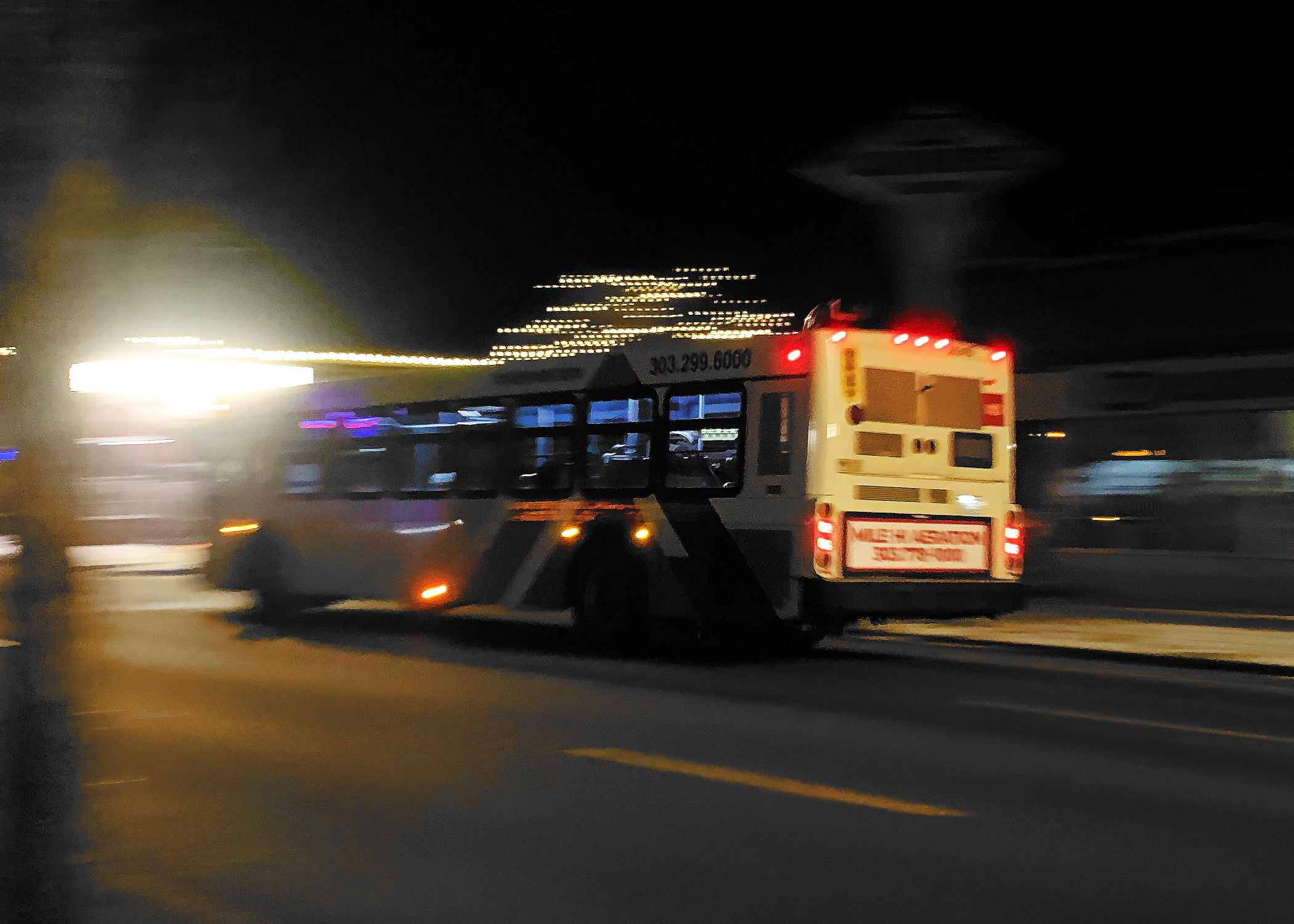
John Flathman

Audio By Carbonatix
A new RTD bus line is promising riders a quick trip between some of Denver’s most visited cultural sites. The ART District Connector, which debuted January 19 as part of RTD’s most recent service changes, links the Santa Fe Arts District, the Denver Theatre District and the RiNo Arts District. The route runs hourly between the Alameda and the 40th and Colorado Transit Stations.
As a frequent RTD user, I reacted to this launch with a mix of curiosity, hope and cynicism. Sure, it seems reasonable enough; those three hubs (the Santa Fe, Theatre and RiNo districts) are some of the city’s best destinations for art, food and libations, especially on a weekend night. On the other hand, did we really need more transit in an area already fairly dense with options? And more important: Would it actually be where it was supposed to be when it was supposed to be there?
February’s First Friday Art Walk offered the perfect night to put it to the test, so I hit the streets on February 7 in search of functional transit. My plan was to grab a bite in RiNo, then hop on the ART as it turned from 40th Avenue to head southwest through the city, with the Santa Fe Arts District as my destination. Here’s how it went:
6:33 p.m.
The night air is crispy, but my naan is still toasty as I exit Indian/Nepali spot Himchuli at 3490 Larimer. The ART was supposed to leave the 40th and Colorado Station at 6:21 p.m., so I should still have time to catch it. Wait, do I know where the nearest stop is? No. No, I do not.
6:35 p.m.
Okay – my helpful RTD mobile app tells me that the nearest stop is Larimer and Downing, just a block north. The ART is supposed to be there at 6:42 p.m., so this should be perfect. When my traveling companion and I reach it, RTD’s real-time route tracker Next Ride says the bus arrives in less than a minute.
6:38 p.m.
The ART suddenly comes around the corner and lurches to a stop at the curb, alarmingly close to my friend. In the driver’s defense, Downing Street creates a long series of near-blind corners and tight turns north of 26th Avenue as it joins the diagonal downtown grid to the rest of the city, and Larimer/Downing is one of the sharpest – so be warned. Properly startled, we scurry on, but the driver is chill and not in a hurry. To prove it, he takes a quick phone call.
6:42 p.m.
We take off. Other than a young solo backpacker, we are the only travelers. The bus is spotless, except for a half-empty bottle of sake on the seat next to us. Looks like pretty good stuff.
6:48 p.m.
At Broadway and Lawrence, three passengers get on.
6:50 p.m.
Turns out two of the three are on the wrong bus route: They get off at Broadway and Curtis.
7:03 p.m.
We exit at Seventh and Galapago, right on time, one block away from the Santa Fe gallery walk.
Bottom line: The ART Connector has potential. With over forty stops between the Colorado and Alameda stations, it provides convenient north/south access to cultural and nightlife destinations along the city’s spine in a way that no other route really does. Most of the other transit options cut laterally (east to west or vice versa) or in the case of rail, loop wide to the west around the river and LoDo. The question is: Who’s going to ride it?
It undoubtedly makes the most sense for Denverites out partying and hitting the galleries. At $2.75 and a little over twenty minutes between the top of RiNo and the heart of Lincoln Park’s Santa Fe Arts District, it’s probably the cheapest and quickest way on the table to pass between those destinations, especially when you consider that it takes parking challenges out of the equation (not to mention DUI stops).
For other commuters, it has slightly less obvious utility. Although it is now the most direct route between its starting and ending stations, it isn’t the quickest: straight rail via A and E lines is faster by twenty minutes, and other connections, like the 24 to the 3, are a touch speedier as well. At best, it does represent another option with no connections necessary: I can easily imagine a scenario in which the A-Line or 24 is delayed and the more lightly-used ART District Connector is a good alternative.
The most problematic element, as always, is the predictably long wait between loops. It’s equally hard to imagine the weekend crowd missing a bus and then waiting an hour for another. In that sense, the ART will struggle to compete with ride-share options. RTD would do well to keep a close eye on the line’s ridership numbers with an eye toward improvements. For example, do we really need the ART bus between 5 a.m. and 7 a.m. on a Monday? It seems to me that increasing the frequency on the weekends would be a far better use of available man-hours. But at least for now, on First Friday you can leave the car keys at home, sit back, relax and let RTD handle the driving (for as long as it lasts).